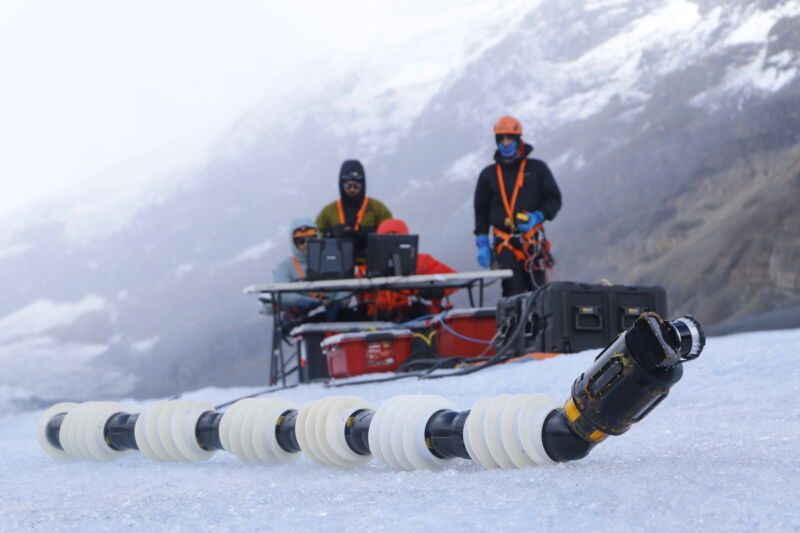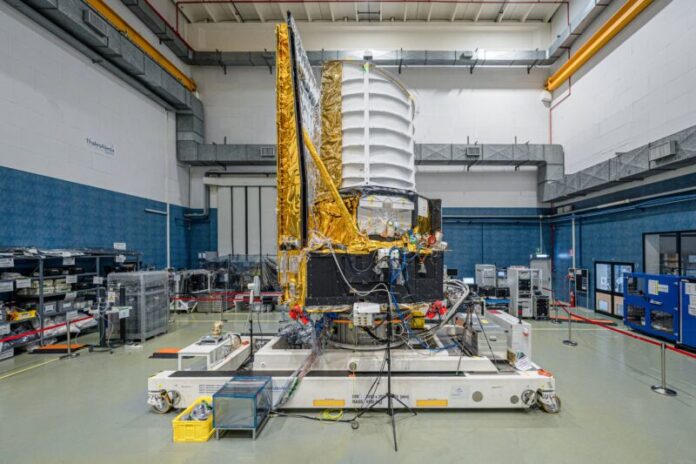
Enlarge / Trying out the robot on a glacier. (credit: NASA/JPL-Caltech)
Icy ocean worlds like Europa or Enceladus are some of the most promising locations for finding extra-terrestrial life in the Solar System because they host liquid water. But to determine if there is something lurking in their alien oceans, we need to get past ice cover that can be dozens of kilometers thick. Any robots we send through the ice would have to do most of the job on their own because communication with these moons takes as much as 155 minutes.
Researchers working on NASA/JPL’s technology development project called Exobiology Extant Life Surveyor (EELS) might have a solution to both those problems. It involves using an AI-guided space snake robot. And they actually built one.
Geysers on Enceladus
The most popular idea to get through the ice sheet on Enceladus or Europa so far has been thermal drilling, a technique used for researching glaciers on Earth. It involves a hot drill that simply melts its way through the ice. “Lots of people work on different thermal drilling approaches, but they all have a challenge of sediment accumulation, which impacts the amount of energy needed to make significant progress through the ice sheet,” says Matthew Glinder, the hardware lead of the EELS project.
Read 11 remaining paragraphs | Comments
Ars Technica - All contentContinue reading/original-link]




